Gorilla trekking is a physical activity that entails hiking through dense undergrowth, tangled thickets, rough terrain, roiling rivers, and swamps in search of gorillas without the aid of a map but rather by following established gorilla trails. Trekkers must be in good health and physically strong to enjoy the unforgettable and fantastic experience because gorilla trekking is quite hard and strenuous. One of the things on people’s bucket lists is hiking up and down in a dense jungle to view mountain gorillas.
Spending time with mountain gorillas in the wild in Africa is a bucket-list experience for many people, and one of the most moving wildlife encounters you can have. Unlike with, say, lions or elephants, with gorillas you get a real sense of connection – after all, they are some of our closest relatives.
Considering Uganda the Pearl of Africa and Rwanda the land of a thousand hills both provide unforgettable gorilla trekking experiences. To help you plan your dream gorilla encounter, we’ve compiled everything you need to know about these two destinations.
There are some things you need to consider before embarking on a gorilla trekking experience in both Uganda and Rwanda. Below is the ultimate planning guide for an unforgettable experience with the great gentle apes.
- Gorilla trekking in Bwindi and Mgahinga National Park
- How do I get to the areas where activities are done
- Accommodation in Uganda and Rwanda
- How much does a gorilla trek cost in Uganda and Rwanda
- How does the trek look like in Uganda and Rwanda
- Are there enough permits in Uganda and Rwanda
- What is the minimum age allowed to trek
- What else can you do after gorilla trekking in Uganda and Rwanda
- When should I visit Uganda and Rwanda
- Essentials needed for gorilla trekking
How much does a gorilla trek cost in Uganda and Rwanda?
In this area, there is a much difference between Uganda and Rwanda when it comes to gorilla permits. In Uganda, a gorilla permit cost 700$ per person, whereas in Rwanda it costs 1500$ per person. This money help in conserving wildlife and managing the park resources. However starting from November up to May, Rwanda offers a 30% discount on gorilla permits to travelers visiting other national parks (Nyungwe national park and Akagera national park)
Does Uganda or Rwanda have more permits?
Gorilla trekking in Uganda and Rwanda accepts 8 people per group to carry out gorilla trekking. They are assigned under different groups to trek different gorilla families. One hour is allowed to spend with the gorillas, this is simply because they are wild animals that are programmed to embrace humans and beyond that time, they can charge and cause havoc since they need privacy to enjoy themselves in their nests. Travelers who need more time should consider gorilla habituation and spend more hours interacting with them.
In Uganda, there are half of the world’s endangered mountain gorillas found in Bwindi impenetrable national park and Mgahinga national park. The Bwindi impenetrable national park has 88 permits for 11 gorilla groups and 8 permits for one gorilla group in Mgahinga national park. Volcanoes national park in Rwanda instead has 80 permits for 10 gorilla groups.
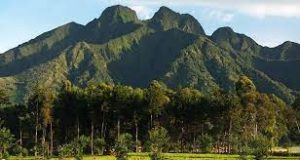
Gorilla permits in Volcanoes National Park are reserved through Rwanda Development Board, whereas inquiries and reservations for gorilla permits in Bwindi Impenetrable National Park and Mgahinga National Park can be made through Uganda Wildlife Authority and your preferred tour operator. However, tour operators can also reserve gorilla permits in both Uganda and Rwanda; as a result, advance reservations are essential in both national parks because gorilla permits sometimes sell out at the busiest times of the year.
The minimum age range for trekking is 15 years and up, and you can obtain a gorilla permit in Uganda and Rwanda. However, there are many activities hotels and lodges have planned to keep your kids occupied while you are out trekking the gentle apes, so don’t be concerned when traveling with your young children.
When should you visit Uganda and Rwanda for gorilla trekking?
While planning a gorilla trekking safari to Uganda and Rwanda, the first thing to consider is that both countries have the same climate and their visiting seasons don’t differ. Uganda and Rwanda have two seasons and that is the wet and dry seasons.
The dry season
Since there are fewer wet and muddy trails to travel in both Bwindi and volcanoes national parks during this time of year, gorilla trekking is much simpler. Although there are some drawbacks to the dry season, such as the tendency of mountain gorillas to move far into the forest in search of ripe fruits and vegetables to feed on since most vegetables have withered due to excessive sunlight and trekking becomes hectic, another drawback is that gorilla permits can be hard to come by because the season coincides with summer and peak seasons. Therefore, it is generally advised to reserve your permits at least three months in advance. If you intend to visit for gorilla trekking, you can get in touch with the tour operator to obtain a permit even a year in advance. The months of June, July, and August always mark the beginning of the dry season, which lasts through February.
Wet/rainy season
The months of April, May, September, October, and November are the wet ones. Due to the abundance of mud on the trails during this season, certain roads become impassable and hazardous, making trekking challenging. Although the likelihood of sighting gorillas increases, gorilla trekking is becoming more accessible. The reason for this is that after a lot of rain, foliage and grass grow thickly, making it simpler to follow the gorillas as they typically graze near to their nests.
What to pack for gorilla trekking safari
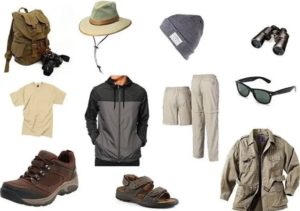
There are essential tools you must not forget to pack in your safari bag when planning a gorilla trekking safari
- You won’t regret taking the walking stick that is offered. It’s extremely helpful when finding your footing on narrow pathways and slippery downhill.
- Garden gloves to push away tree branches and for gripping tree roots – you will be happy to have clean hands when taking photos.
- Long socks and gaiters to prevent cuts and scratches and protect from army ants.
- It often rains heavily, so a light raincoat is highly recommended.
- Water-resistant pants to protect you from the stinging nettle plants and sliding downhill on the seat of your pants.
- Sturdy walking boots with good ankle support and tread to grip the wet, uneven terrain.
- A lightweight, foldable backpack is necessary for carrying all your essentials.
Where to stay
There are a number of accommodation facilities in Bwindi impenetrable national park, Mgahinga gorilla national park, and Volcanoes national park where you can stay during your gorilla trekking safari. The accommodations range from budget to midrange and luxury including Volcanoes Bwindi lodge. Four gorillas lodge, Ichumbi gorilla lodge, Bakiga lodge, Nkuringo Bwindi gorilla lodge, Ruhija gorilla safari lodge, Buhoma lodge, Trekkers tavern cottages, Chameleon hill lodge, Gift of nature lodge, Cuckoo land tented lodge, Lake Mulehe lodge, Lake Mutanda Lodge, Mucha lodge, Ruzizi tented lodge, One and Only gorilla nest, Bisate lodge, Sabyinyo silverback lodge, Le Bambou gorilla lodge among others.
How does gorilla trekking look like in Uganda and Rwanda?
Gorilla trekking in both countries does not differ as such, there is a slight difference between the national parks.
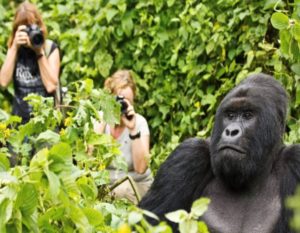 Bwindi impenetrable national park gorillas cover large areas and tracking them down can extend greatly between 1-9 hours. The impenetrable forest is covered mostly with thick montane and low land trees and the thick bushed makes trekking more challenging, especially in the Nkuringo sector but the impression when you meet the gorillas is worth the strive. Mgahinga national park trekking is strenuous that needs hiking the steep slopes of the volcanoes but takes little time to track the gorillas since there is only one gorilla family that is habituated and the park occupied a small area that takes about 2 hours to see the gorillas.
Bwindi impenetrable national park gorillas cover large areas and tracking them down can extend greatly between 1-9 hours. The impenetrable forest is covered mostly with thick montane and low land trees and the thick bushed makes trekking more challenging, especially in the Nkuringo sector but the impression when you meet the gorillas is worth the strive. Mgahinga national park trekking is strenuous that needs hiking the steep slopes of the volcanoes but takes little time to track the gorillas since there is only one gorilla family that is habituated and the park occupied a small area that takes about 2 hours to see the gorillas.
On the contrary gorilla trekking in Volcanoes National Park in Rwanda is less challenging and takes a short period. Volcanoes’ vegetation is covered with alpine trees, thickets, bamboo forests swamps, and marshes. The park lies on a higher elevation than Bwindi impenetrable national park but it’s more open and easier to get a wonderful view of the park. Therefore talk to your operator about your physical fitness and recommend the best trek for your stamina.
How do I get to Bwindi impenetrable park and volcanoes national park?
The two gorilla national parks differ in terms of locations. Bwindi Impenetrable National Park is situated in the southwestern part of Uganda whereas Volcanoes National Park is located in the northwestern part of Rwanda. The Volcanoes National Park is located just 106.3 kilometers away from Kigali International airport, this takes about 2 hours and 30 minutes to drive to access the park. Bwindi on the contrary is located 462.5 kilometers from Entebbe international airport which takes roughly 9-10 hours’ drive. So trekking Uganda gorillas from Kampala or Entebbe, roughly needs 2 days (one to travel to the park and the second for gorilla trekking) whereas traveling from Kigali Rwanda to Bwindi national park is about 4 hours passing either Katuna border or Kyanika border in Kisoro district.
Alternatively, you can take a flight charter from Kajjansi airstrip and fly over to Kihihi Airfield which is near to the park if you caught up with time, this takes about 3 hours but normally visitors prefer driving to the park while having the benefit of other countryside attractions.
What to do after gorilla trekking in Uganda and Rwanda
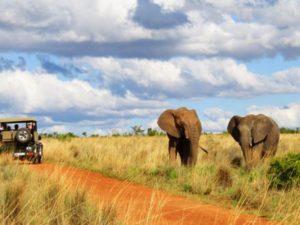
Gorilla trekking is a hectic and tough adventure that takes more hours hiking in the dense forests leaving you fully drained and needing a refreshment to regain your zeal perhaps Uganda is better-rounded with many safari destinations with echo-friendly experiences such as Queen Elizabeth for a wonderful boat ride and game drives in both Kasenyi pains and Ishasha sector for un exceptional tree climbing lions, lake Bunyonyi for canoeing on different islands. You may take a community walk to visit the pygmies in Bwindi forest national park, you may prefer to go for chimpanzee tracking or bird watching in Kibale forest national park or enjoy white water rafting on the amazing waterfalls of the source of the river Nile.
However, visitors to Volcanoes National Park in Rwanda can opt for a game drive in Akagera national park for Africa’s big 5 experience. Chimpanzee trekking, a forest nature walk, and a canopy walk are all done at Nyungwe forest national park. In due course, visitors can take a city trip around Kigali city to experience the diversity and development of the country including a visit to Dan Fossey tomb, the unforgettable 1994 Rwanda genocide memorial site, museum, art craft shops for souvenirs, Kigali’s main market, and gorilla guardian village former ibyiwacu cultural village and many others. Travelers interested in taking gorilla trekking tours should check our 5 days gorilla trekking safari in Uganda and Rwanda or opt for 7 days Uganda Rwanda Safari to have a double gorilla experience.

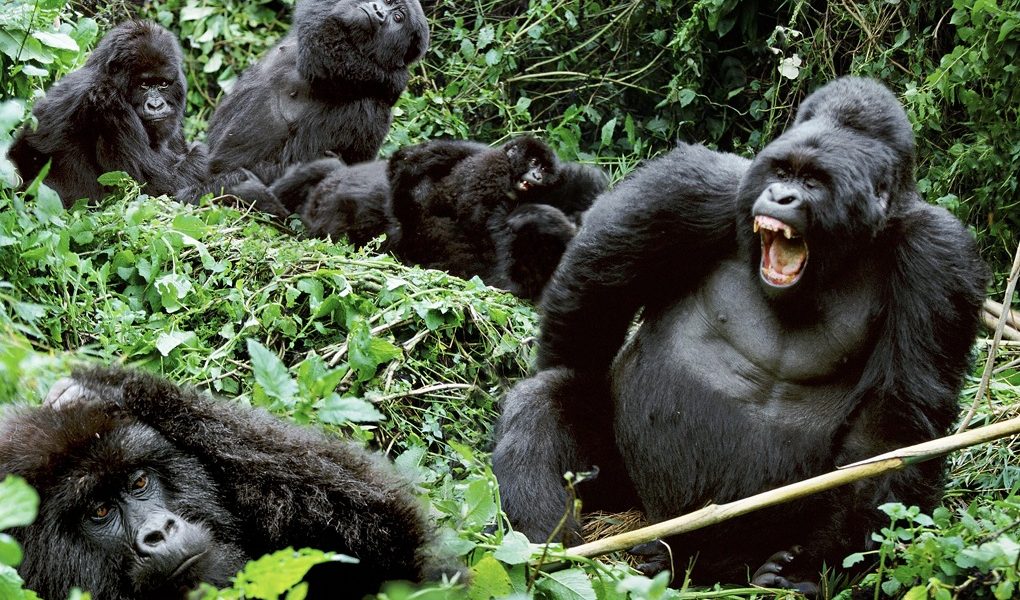
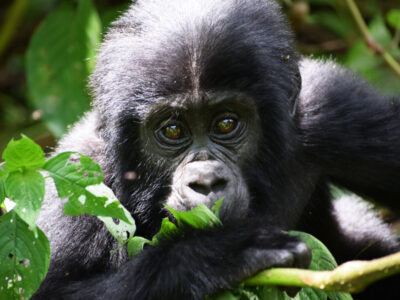
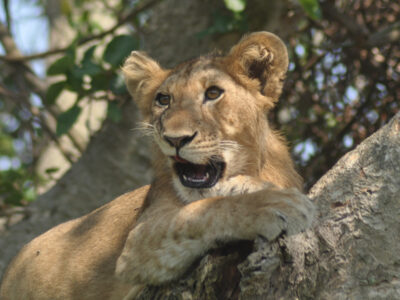
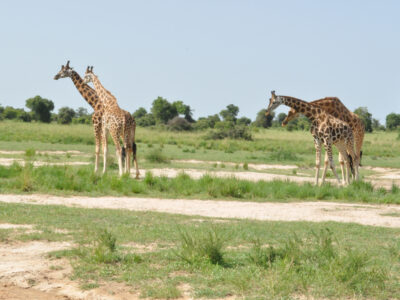
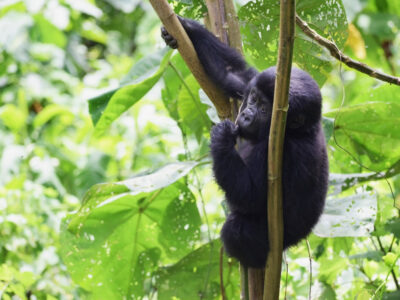
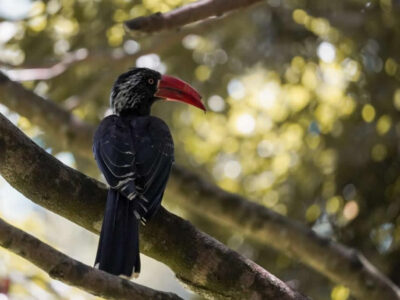
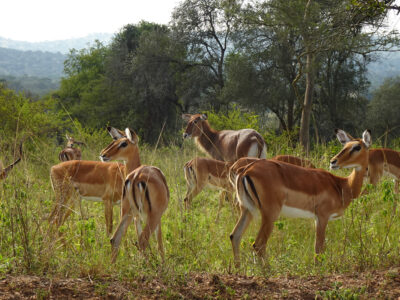
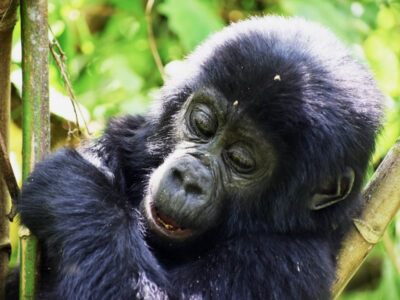
2 Replies to “A Guide to Gorilla Trekking in Uganda and Rwanda”